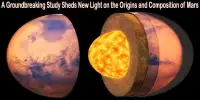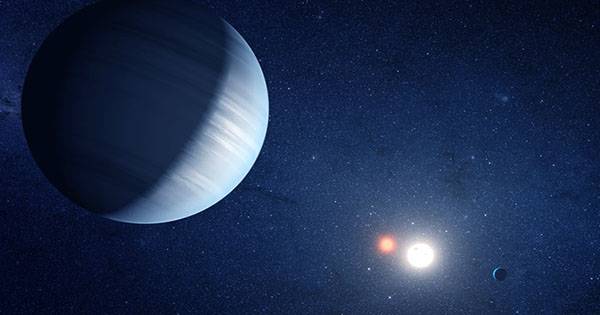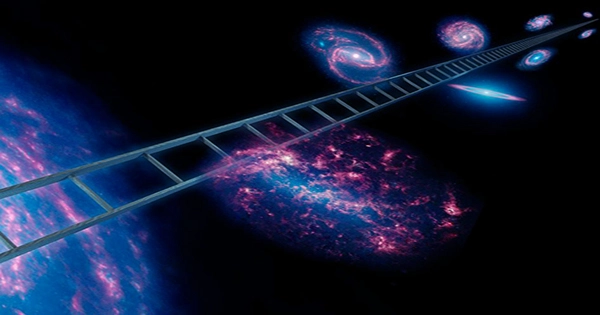A new telescope or observatory that has been developed or proposed by NASA, specifically for the purpose of studying the growth and structure of galaxies, as well as the nature and distribution of dark matter within them. It may use a variety of observational techniques, such as imaging and spectroscopy, to gather data on the properties of galaxies, their constituent stars and gas, and the distribution of dark matter within them.
The Nancy Grace Roman Space Telescope, operated by NASA, will look at slender streams of stars that extend far beyond the apparent boundaries of many galaxies. To fully view these structures surrounding nearby galaxies, missions like the Hubble and James Webb space telescopes would need to piece together hundreds of small photos. Roman will do so in a single snapshot. These observations will be used by astronomers to investigate the properties of dark matter and the evolution of galaxies.
As a component of the halo, the spherical region encircling a galaxy, stellar streams, which resemble ethereal strands of hair flowing outward from some galaxies, are gently meandering through space. However, these stellar flyaways are fossil recordings of a galaxy’s previous drama that were left behind in the cosmos. Astronomers become cosmic archaeologists by studying them.
The Milky Way drained stars from globular star clusters, creating particularly mysterious stellar streams that have never been discovered in other galaxies. Because they have fewer stars, they are fainter, which makes them much harder to detect in other, farther-off galaxies.
Roman may detect them in several of our neighboring galaxies for the first time ever. Even individual stars should be seen in these massive, dark structures because to the mission’s wide, sharp, and deep vision. Pearson oversaw the creation of an algorithm to systematically look for star streams coming from globular clusters in nearby galaxies in a prior study.
Starkenburg’s new study adds to the picture by predicting that Roman should be able to detect dozens of streams in other galaxies that originated from dwarf galaxies, offering unprecedented insight into the way galaxies grow.
“It’s exciting to learn more about our Milky Way, but if we truly want to understand galaxy formation and dark matter we need a larger sample size,” Starkenburg said. “Studying stellar streams in other galaxies with Roman will help us see the bigger picture.”
Halos are mostly made from stars that were stripped away from other galaxies. Roman’s wide, deep images will be sharp enough that we can resolve individual stars in other galaxies’ halos, making it possible to study stellar streams in a large number of galaxies for the first time.
Tjitske Starkenburg
The Nancy Grace Roman Space Telescope is managed at NASA’s Goddard Space Flight Center in Greenbelt, Maryland, with participation by NASA’s Jet Propulsion Laboratory and Caltech/IPAC in Southern California, the Space Telescope Science Institute in Baltimore, and a science team comprising scientists from various research institutions. The primary industrial partners are Ball Aerospace and Technologies Corporation in Boulder, Colorado; L3Harris Technologies in Melbourne, Florida; and Teledyne Scientific & Imaging in Thousand Oaks, California.
“Halos are mostly made from stars that were stripped away from other galaxies,” said Tjitske Starkenburg, a postdoctoral fellow at Northwestern University in Evanston, Illinois, who examined Roman’s potential in this area. “Roman’s wide, deep images will be sharp enough that we can resolve individual stars in other galaxies’ halos, making it possible to study stellar streams in a large number of galaxies for the first time.”
The team, led by Starkenburg, will share their results at the American Astronomical Society’s 240th meeting in Pasadena, California, today.
Galactic Cannibalism, Stolen Stars
The idea that galaxies expand in part by consuming smaller star clusters is supported by simulations. A dwarf galaxy captured into orbit by a larger one becomes distorted by gravity. The galaxy’s larger stars follow arcs and loops as they drip out of the smaller galaxy to eventually join it.
“As individual stars leak out of the dwarf galaxy and fall into the more massive one, they form long, thin streams that remain intact for billions of years,” said Sarah Pearson, a Hubble postdoctoral fellow at New York University in New York City and the lead author of a separate study about the mission’s projected observations in this area. “So stellar streams hold secrets from the past and can illuminate billions of years of evolution.”
Astronomers have caught this cannibalistic process in the act using telescopes like ESA’s (European Space Agency’s) Gaia satellite, which is fine-tuned to measure the positions and motions of stars in our Milky Way galaxy. By taking comparable measurements of stars in both the Milky Way and other galaxies, Roman will expand on these findings.
The Milky Way has at least 70 stellar streams, which means that at least 70 dwarf galaxies or globular star clusters groups of thousands of gravitationally linked stars have probably been consumed by it.
Astronomers might be able to piece together snapshots in time to demonstrate the motion of the stars using Roman’s Milky Way photographs. That will assist us in discovering the composition of dark matter, an invisible substance that we can only detect through its gravitational effects on observable things.
One theory suggests dark matter is “cold,” or made up of heavy, sluggish particles. If this is the case, it should group together within galaxy haloes, disrupting star streams in ways that Roman could observe. Roman could eliminate or detect these distortions, which would help to reduce the potential constituents of dark matter.
Additionally, astronomers are eager to investigate star streams in several Milky Way nearby galaxies. Due to their obscurity and distance, they have not been extensively investigated in other galaxies.
Additionally, they are so big that they can encompass a whole galaxy. Roman’s unmatched panoramic view is necessary to capture photos that are both large enough to see and enough detailed to be seen.
















